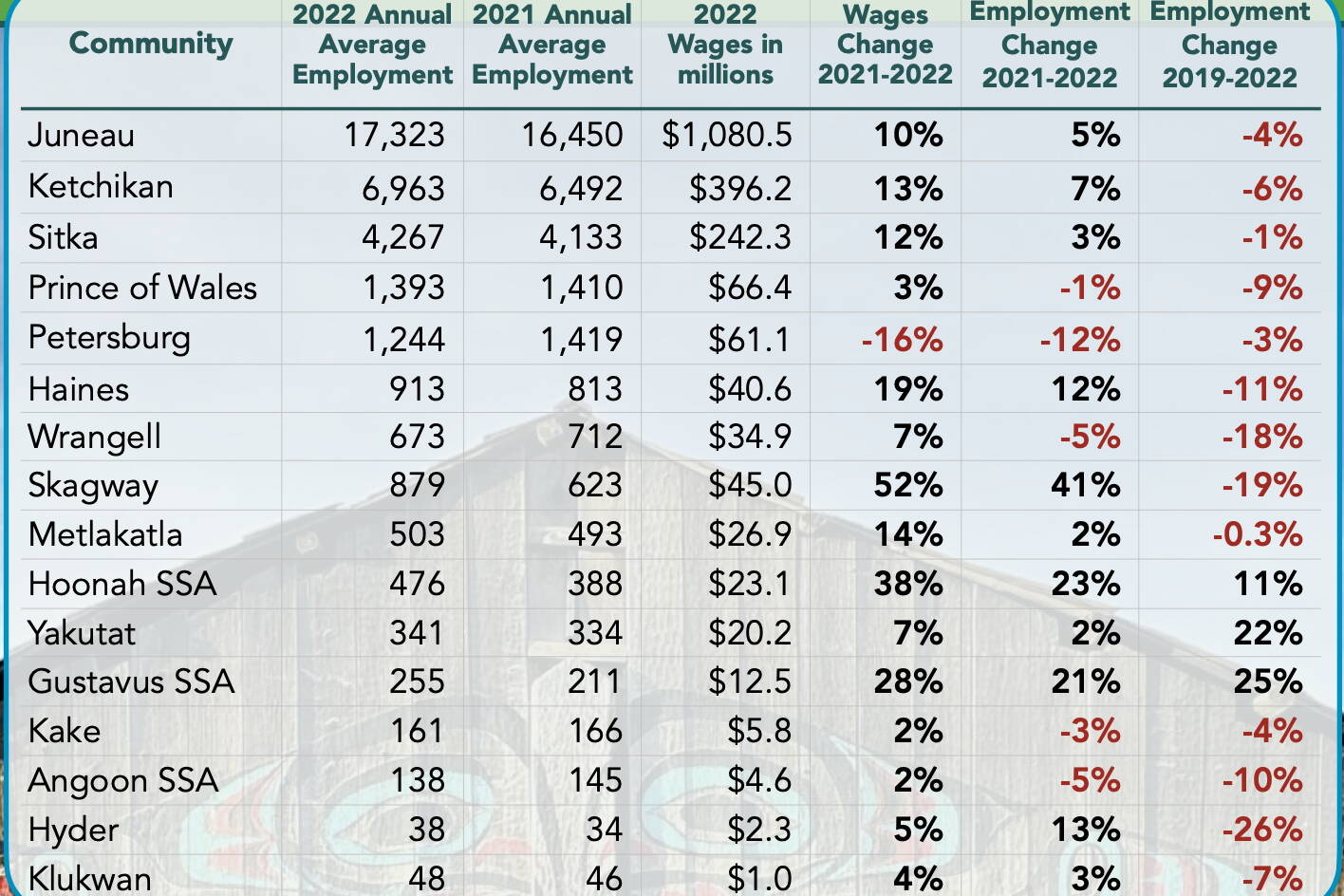An upbeat outlook for nearly all aspects of Southeast Alaska’s economy in 2023 and beyond was offered in an annual study presented Tuesday to open this year’s Southeast Conference in Sitka, where hundreds of business, political and other leaders are spending three days discussing a range of regional issues.
Coming off the downturn of the COVID-19 pandemic, jobs in the region in 2022 were up 5% compared to the previous year and wages were up 11%, according to Meilani Schijvens, owner of Rain Coast Data and author of the study “Southeast Alaska by the Numbers” that has been conducted annually since 2010. She said a survey of business leaders shows “the 2023 business climate is the most positive recorded since the annual analysis began in 2010.”
“We’re going to do something here we haven’t done in the 12 years that we’ve done ‘Southeast by the Numbers,’ and that is we’re going to give the Southeast Alaska economy an ‘A,’” she told conference attendees during a presentation of the report. “Which doesn’t mean that there’s not challenges.”
Areas of concern include workforce, housing and childcare shortages, according to Schijvens.
“Continued long-term growth is dependent on the region’s ability to respond to housing and childcare shortages that threaten workforce attraction and retention,” the report notes. “Leaders must establish sustainable strategies to ensure that the federal investments currently bolstering our economy will continue to have long-lasting impacts on the region.”
Also concerning are the state government’s ongoing fiscal problems, which over the long-term are resulting in deficit spending, and a lack of some essential programs and services, according to the report.
Tourism, government, healthcare, retail, construction, professional and business services, transportation, and mining were all cited as growing industries during 2022, according to the report.
One of the biggest reasons for the recovery is a large infusion of federal funding, including COVID-19 relief and from measures such as the 2021 bipartisan infrastructure bill, Schijvens said during her presentation.
“We were in real dire straits about two years ago,” she said. “And so this has really helped to bring us back into a very strong and exciting economy.”
The report shows jobs in 2023 are expected “to be up (or flat) in every single sector, except for state government.” She said employment isn’t quite back to the high reached in 2019, but wages are 12% higher this year compared to that year.
Meanwhile, an inflation rate that was soaring the past couple of years is showing a decline during the first half of 2023, Schijvens said.
“Prices probably won’t go down, but they’re stabilizing,” she said.
Alaska Native entities are expressing the most optimistic outlook about economic conditions, followed by the tourism industry, Schijvens said. She said tribal governments say a 12% growth in jobs and 20% growth in wages in 2022 compared to the previous year.
“Now tribal government represents 10% of all regional government jobs in Southeast Alaska,” she said.
Juneau was noteworthy in that one survey named it the third-best city in the U.S. for summer jobs, “due to the prevalence and quality of jobs for 16–24 year olds.”
Schijvens said communities without a large tourism presence are more pessimistic, while the seafood industry has a decided mixed outlook. Her report states it was the top private sector industry, “with its most valuable catch since 2017 and record value-added processing.”
However, “despite solid harvest returns, 2023 has been a challenge for regional fishermen,” her report notes. “An effort to ban the troller fleet from fishing for chinook salmon was nearly successful and would have disproportionally impacted rural Southeast communities. Also, the ongoing Russia-Ukraine war is contributing to an over-abundant global salmon supply, leading to decreased prices across all species, with especially dismal chum prices.”
• Contact Mark Sabbatini at mark.sabbatini@juneauempire.com or (907) 957-2306.

